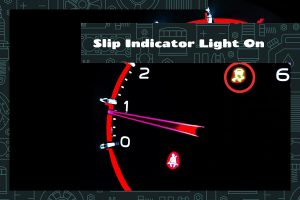Pay attention, motorists: the lights on your dashboard serve a purpose beyond aesthetics. They are actually attempting to convey some critical information, such as “hey, your engine is on fire” or “you are about to run out of gas.” So, if you see your Subaru’s A/T oil temp light flashing, that means something’s not right.
The red A/T oil temp light on your Subaru can mean one of the following things:
- Low transmission fluid levels
- Overheating transmission
- Faulty transmission oil cooler
- Malfunctioning transmission oil temperature sensor
However, this isn’t the only cause and fix for a flashing A/T temp light. Below, I’ll describe what the A/T oil temp light is, what can cause it to flash, how to fix the problem, and what you can do to prevent the light from flashing in the future.
What Is the A/T oil temp light?
Some vehicles feature an A/T oil temp light, also called an automatic transmission oil temperature light, to warn the driver that the transmission oil temperature has reached an unsafe level.
Too much heat in the transmission oil can be harmful to the gearbox and other parts of the vehicle. Increased transmission wear and tear due to hot transmission oil can reduce a transmission’s lifespan and increase the cost of maintenance and repairs.
In addition, the transmission oil can break down and loses some of its ability to lubricate and cool the transmission. When this happens, the transmission can overheat and eventually stop working.
Subaru A/T oil temp light Flashing – Causes & Fix
Let’s take a close look at the potential causes of a flashing A/T oil temp light and what you can do to resolve the issue.
1. Low transmission fluid levels
If your A/T oil temp light flashes the moment you turn your Subaru on, this could possibly mean that there isn’t enough transmission fluid. Low transmission fluid levels can lead to difficulties in shifting gears, reduced gas economy, and premature or sudden transmission failure while on the road.
Solution: Refill the transmission fluid
- Look at the dipstick for the transmission fluid level. In most vehicles, it can be found on the front of the engine, close to the driver’s seat. Take out the transmission’s dipstick to check the fluid levels and see if more transmission fluid needs to be added. When finished, place the dipstick back in its original location.
- Choose the correct transmission fluid. Transmission fluid type and quantity recommendations should be found in the owner’s manual.
- Locate the transmission fluid fill hole. It is typically found on top of or to the side of the transmission. Look for a “Transmission,” “Trans,” or “ATF” label.
- Add the transmission fluid. You may need a funnel to do this. Be careful not to overfill the transmission.
- Check the transmission fluid level. Check the level by pulling out the dipstick.
2. Overheating transmission
If you notice the A/T temp oil light flashing while driving, this may be a clear indication that the transmission oil is too hot. When the transmission oil becomes too hot, it can cause damage to the transmission and other components. High transmission oil temperatures can lead to increased wear and tear on the transmission, which can shorten its lifespan and lead to costly repairs.
Solution: Pull over and idle your Subaru until the light stops flashing
This may sound like a simple trick but it is. However, it’s only a temporary solution, so you should still look for other ways to permanently resolve overheating problems.
- Bring your Subaru to the side of the road.
- Put it in the park.
- Idle the engine until the A/T oil temp light turns off.
This can take anywhere from 5 to 30 minutes, depending on how hot the transmission fluid is. It’s generally safe to assume that longer cooldown periods are indicative of a faulty transmission oil cooler.
3. Faulty transmission oil cooler
A transmission oil cooler is a heat-dissipating component that, if broken, would prevent the transmission oil from staying at a safe operating temperature. The A/T oil temp light will turn on if the transmission oil temperature rises above the normal operating range.
Solution: Check the transmission oil cooler
This can be done if 5 steps:
- Check the transmission fluid level. Since the transmission oil cooler can fail if the fluid level is too low, keeping an eye on the transmission fluid level and topping it off when necessary is essential.
- Check for leaks. Check for damp areas around the transmission oil cooler, as well as stains on the ground or the cooler itself, as these could indicate a leak. Depending on the severity of the leak, you may need to either repair it or replace it.
- Check the transmission oil temperature. Check the temperature of the transmission oil with a special gauge. Possible trouble with the transmission oil cooler would be indicated by a reading that is persistently above normal.
- Check the transmission oil cooler for damage. Verify that the transmission oil cooler is free of obstructions and damage. Such issues may require replacing the component completely.
- Replace the transmission oil cooler if necessary. A transmission oil cooler replacement may be necessary if it has been damaged or is not doing its job. It’s best to leave this step to your mechanic who knows what they’re doing.
4. Malfunctioning transmission oil temperature sensor
The transmission oil temperature is monitored by the oil temperature sensor. The A/T oil temperature warning light may flash if the sensor is defective.
Solution #1: Check the electrical wiring
- Locate the transmission oil temperature sensor. The sensor is usually placed on the transmission or right next to it. Look for the labels “transmission oil temperature sensor” or “transmission oil temp sensor.”
- Visually inspect the wiring that connects the sensor to the vehicle’s electrical system. Inspect for obvious problems like broken or disconnected parts. Wiring damage should be fixed or replaced as necessary.
Solution #2: Test the sensor
Check the transmission oil sensor with a diagnostic tool or a multimeter. A diagnostic tool or battery disconnect may be required to clear a fault code caused by a faulty transmission oil temperature sensor. It may be necessary to replace the sensor if it is not operating normally.
Solution #3: Replace the sensor
A new sensor will have to be installed if the current one is defective. If you don’t have the proper equipment and training, it’s probably best to have a professional mechanic take care of this for you.
How to Prevent A/T oil temp light from Flashing in the Future
Check and maintain the transmission fluid level
To keep the transmission well-lubricated and cooled, it is essential to keep an eye on the transmission fluid level and add more as needed.
Use the correct type of transmission fluid

Transmissions can only work as intended when filled with the appropriate fluid. To find out what kind of fluid is best for your Subaru, you can either consult the manual or consult a professional mechanic.
Avoid overloading your vehicle:
A hot transmission is a sign that your vehicle’s transmission is struggling under the added weight of passengers or cargo. When in doubt, ask the manufacturer for their weight recommendations.
Avoid high transmission fluid temperatures
The A/T oil temp light may flash on if the transmission fluid temperature is too high. If you must drive when temperatures are extremely high or traffic is heavy, use a transmission cooler.
Get regular transmission maintenance
Keep your A/T oil temp light off by performing routine maintenance like fluid changes and inspections.






